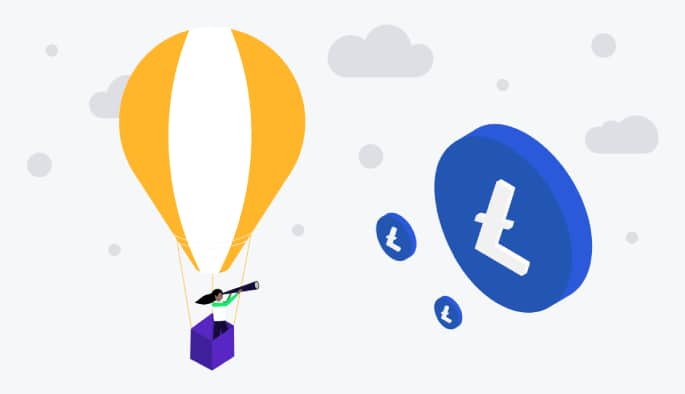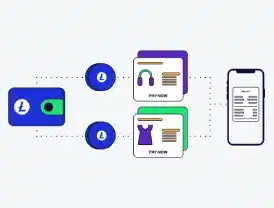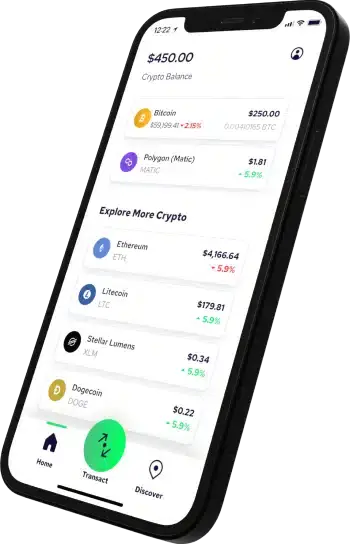What Is Litecoin?
The year was 2011 and bitcoin was starting to build a sizable following. As the only major currency in the digital assets market, bitcoin had owned all but a small sliver of the crypto market share. Though it was dominating the market, bitcoin had some perceived drawbacks by the crypto community, such as the speed at which it processed and added new blocks to its blockchain. Sensing an opportunity, the crypto community jumped at the chance to create a new and faster version of bitcoin.
Two years after bitcoin was introduced to the market, the first real alternatives to bitcoin had entered the market — and thus the category of “altcoins” was born. The name altcoin, which is a combination of the words “alternative” and “coins”, has come to refer to a category of all cryptocurrencies and tokens that are not named bitcoin.
Though most of these early alternative currencies ended up flaming out, there was one altcoin from that time period that emerged as a true alternative to bitcoin, and its name is Litecoin. Though Litecoin was not the first digital currency to compete with bitcoin — other altcoins in the market before Litecoin were Namecoin, Solidcoin, and Tenebrix, just to name a few — it has become the longest-tenured coin from that first generation of altcoins that were distributed in 2011. Created in October 2011 by Charlie Lee, a Google software engineer who would later go on to become the Director of Engineering at Coinbase, Litecoin has been one of the most recognized, trusted, and used blockchain-based payment networks in the world for more than a decade.
Recognizing that the transaction throughput of bitcoin would become a serious problem for the scalability of bitcoin, Lee created Litecoin to solve this issue. However, Lee has always maintained that Litecoin was built with the intention to complement bitcoin, not replace it. On many occasions, Lee has mentioned that Litecoin was developed as the “light version of bitcoin” and had always envisioned the currency to be the silver to bitcoin’s gold. With all that being said its story is much more than just a bitcoin alternative.
Consider this guide to be your launching pad into the Litecoin ecosystem, providing you with a broad understanding of Litecoin and its capabilities.

What is Litecoin?
Litecoin is essentially Bitcoin’s source code — copy and pasted with a few minor tweaks — which makes Litecoin an entirely new blockchain without a shared genesis block. In this regard, Litecoin shares many similarities to bitcoin. Much like bitcoin, Litecoin utilizes a proof-of-work (PoW) system to verify transactions on its blockchain. Litecoin miners solve complex mathematical problems called hashes to earn the right to record new transactions to the blockchain.
However, Litecoin has a few crucial differences to Bitcoin when it comes to its circulation supply, its cryptography, and its transaction speed. In regards to its supply, whereas bitcoin has a supply of 21 million, Litecoin has a supply of 84 million coins, of which roughly 70 million have been mined and are currently in circulation. Secondly, bitcoin uses the SHA-256 hashing function to power the PoW mechanism on the Bitcoin network, whereas Litecoin was developed to use the Scrypt hashing algorithm — we’ll go more in-depth into the importance of this facet later.
The last major difference between Litecoin and bitcoin is the speed at which transactions can be confirmed — one of the benefits of using the Scrypt hashing algorithm. Bitcoin’s average transaction confirmation time is about 10 minutes per transaction whereas Litecoin’s transaction confirmation is roughly 2.5 minutes. Thus, Litecoin’s network can handle more transactions because of its shorter block generation time.
One of the main reasons that Lee refers to Litecoin as the silver to bitcoin’s gold is because of its enhanced features that allow for more efficient transactions. Litecoin was built to be a more practical and scalable medium of exchange because of its faster block times and higher transaction throughput.
How does the Litecoin network work?
One of the biggest objectives that Lee had when creating Litecoin was that he wanted it to be as accessible and democratized as possible. This was due to the fact that Lee felt that individuals would be the biggest supporters and proponents of the coin. This mindset is what informed a lot of Lee’s early decision-making about how the Litecoin network would eventually be developed and how mining the coin would work. For this reason, Lee felt it was extremely important for individuals to be able to mine litecoin without any advanced equipment.
With this in mind, Lee developed Litecoin using the Scrypt hashing algorithm, which is a memory-intensive algorithm. Scrypt was designed deliberately to make mining as accessible and democratized as possible, and so by using this hashing algorithm, Lee set out to make Litecoin and the Litecoin network as accessible as possible. With the Scrypt hashing algorithm, no advanced hardware or equipment was necessary to mine the coin. Due to this accessibility, Litecoin grew in popularity because miners liked that they could mine it on their personal computers and laptops.
For each block generated on the Litecoin blockchain, miners are rewarded with a predetermined amount of LTC, known as a block reward. As time goes on, the block reward is gradually reduced by increments of 50% in a process known as halving.
To compensate for Litecoin’s faster block time, the interval between halvings was extended. Whereas bitcoin has a block reward halving every 210,000 blocks, Litecoin’s halving takes place every 840,000 blocks.
What is Litecoin’s mission?
Litecoin is an open source, global payment network — a medium of commerce — and its mission is to enable instant, near-zero cost payments to anyone in the world. Litecoin was developed to offer a faster, cheaper, and more efficient alternative to bitcoin.
Due to these qualities, Litecoin can be an easier currency to use when dealing with transactions of smaller quantities, and was built with the intention to complement bitcoin. It was also created with the intention of being a store of value, as many consider Litecoin to be a better version of bitcoin and gold given that it’s portable, easily storable, and impossible to counterfeit.
Currently, the development of Litecoin and the Litecoin network is overseen by the Litecoin Foundation, a non-profit organization whose mission is to advance Litecoin for the good of society, by developing and promoting state-of-the-art blockchain technologies.



